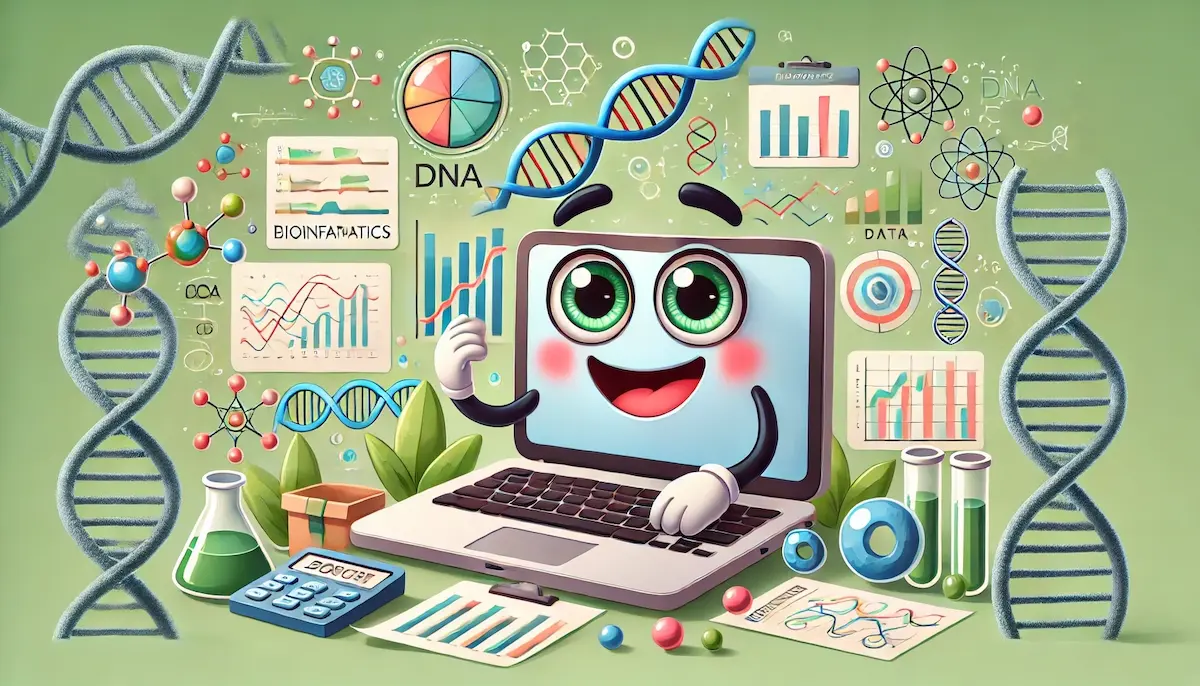Bioinformatics is an interdisciplinary field that combines biology, computer science, and information technology to analyze and interpret biological data. With the advent of high-throughput technologies in genomics, proteomics, and other areas of molecular biology, bioinformatics has become essential for managing and understanding vast amounts of complex biological data.
Key Components of Bioinformatics
Data Collection and Management
Bioinformatics involves collecting and managing biological data from various sources, including DNA sequences, protein structures, and biochemical pathways. Databases such as GenBank, Protein Data Bank (PDB), and Kyoto Encyclopedia of Genes and Genomes (KEGG) are essential resources for storing and accessing this data.
Sequence Analysis
One of the fundamental tasks in bioinformatics is the analysis of DNA, RNA, and protein sequences. Tools like BLAST (Basic Local Alignment Search Tool) and ClustalW help researchers compare sequences, identify similarities, and infer evolutionary relationships.
Genomics
Genomics focuses on the structure, function, evolution, and mapping of genomes. Bioinformatics tools are used to assemble, annotate, and analyze whole genomes. Techniques like next-generation sequencing (NGS) generate massive amounts of data, which bioinformatics helps process and interpret.
Proteomics
Proteomics involves the large-scale study of proteins, including their structures and functions. Bioinformatics tools assist in identifying proteins, predicting their structures, and understanding their interactions. Databases like UniProt provide comprehensive protein information.
Structural Bioinformatics
This area focuses on the 3D structures of biological molecules. Bioinformatics tools help predict molecular structures, analyze their stability, and understand their interactions. Software like PyMOL and Chimera are widely used for molecular visualization and analysis.
Systems Biology
Systems biology aims to understand complex biological systems and their interactions. Bioinformatics integrates data from genomics, proteomics, and other fields to model and simulate biological processes. This holistic approach helps in understanding how different components of a biological system interact and function together.
Applications of Bioinformatics
Drug Discovery and Development
Bioinformatics plays a crucial role in drug discovery by identifying potential drug targets and predicting the effects of drug candidates. Virtual screening and molecular docking are techniques used to find and optimize new drugs.
Personalized Medicine
By analyzing genetic data, bioinformatics enables personalized medicine, where treatments are tailored to an individual’s genetic makeup. This approach can improve the effectiveness of treatments and reduce adverse effects.
Agriculture
In agriculture, bioinformatics helps in the development of genetically modified crops with desirable traits such as disease resistance, improved yield, and enhanced nutritional value. It also aids in understanding plant genomes and breeding strategies.
Evolutionary Biology
Bioinformatics tools are used to study evolutionary relationships among organisms. By comparing genetic sequences, researchers can construct phylogenetic trees, trace evolutionary paths, and understand the genetic basis of adaptation and speciation.
Environmental Biotechnology
Bioinformatics assists in the study of microbial communities in various environments. Metagenomics, the analysis of genetic material recovered directly from environmental samples, helps in understanding microbial diversity and its impact on ecosystems.
Challenges in Bioinformatics
Data Management
The sheer volume of biological data generated by high-throughput technologies poses significant challenges in storage, management, and retrieval. Efficient data management systems and cloud-based solutions are essential to handle this data deluge.
Data Integration
Integrating data from various sources and formats is complex but crucial for comprehensive analysis. Bioinformatics tools must be capable of harmonizing heterogeneous data to provide meaningful insights.
Computational Resources
Bioinformatics analyses require significant computational power and resources. Access to high-performance computing and optimization of algorithms are critical to manage large datasets efficiently.
Interdisciplinary Collaboration
Bioinformatics is inherently interdisciplinary, requiring collaboration between biologists, computer scientists, and statisticians. Effective communication and teamwork are essential to address complex biological questions.
Ethical and Privacy Concerns
The use of genetic data raises ethical and privacy issues. Ensuring data security, obtaining informed consent, and addressing the potential misuse of genetic information are important considerations in bioinformatics research.
The Future of Bioinformatics
The future of bioinformatics is promising, with advancements in technology and methodology driving the field forward. Key trends include:
- AI and Machine Learning: These technologies will enhance data analysis, pattern recognition, and predictive modeling in bioinformatics, leading to more accurate and efficient insights.
- Single-Cell Sequencing: Advances in single-cell sequencing will provide deeper understanding of cellular heterogeneity and function, contributing to fields like cancer research and developmental biology.
- Integration of Multi-Omics Data: Combining data from genomics, proteomics, transcriptomics, and metabolomics will offer a more comprehensive view of biological systems and their regulation.
- Precision Medicine: Continued development in bioinformatics will drive the implementation of precision medicine, enabling more personalized and effective healthcare solutions.
Blockfine thanks you for reading and hopes you found this article helpful.
